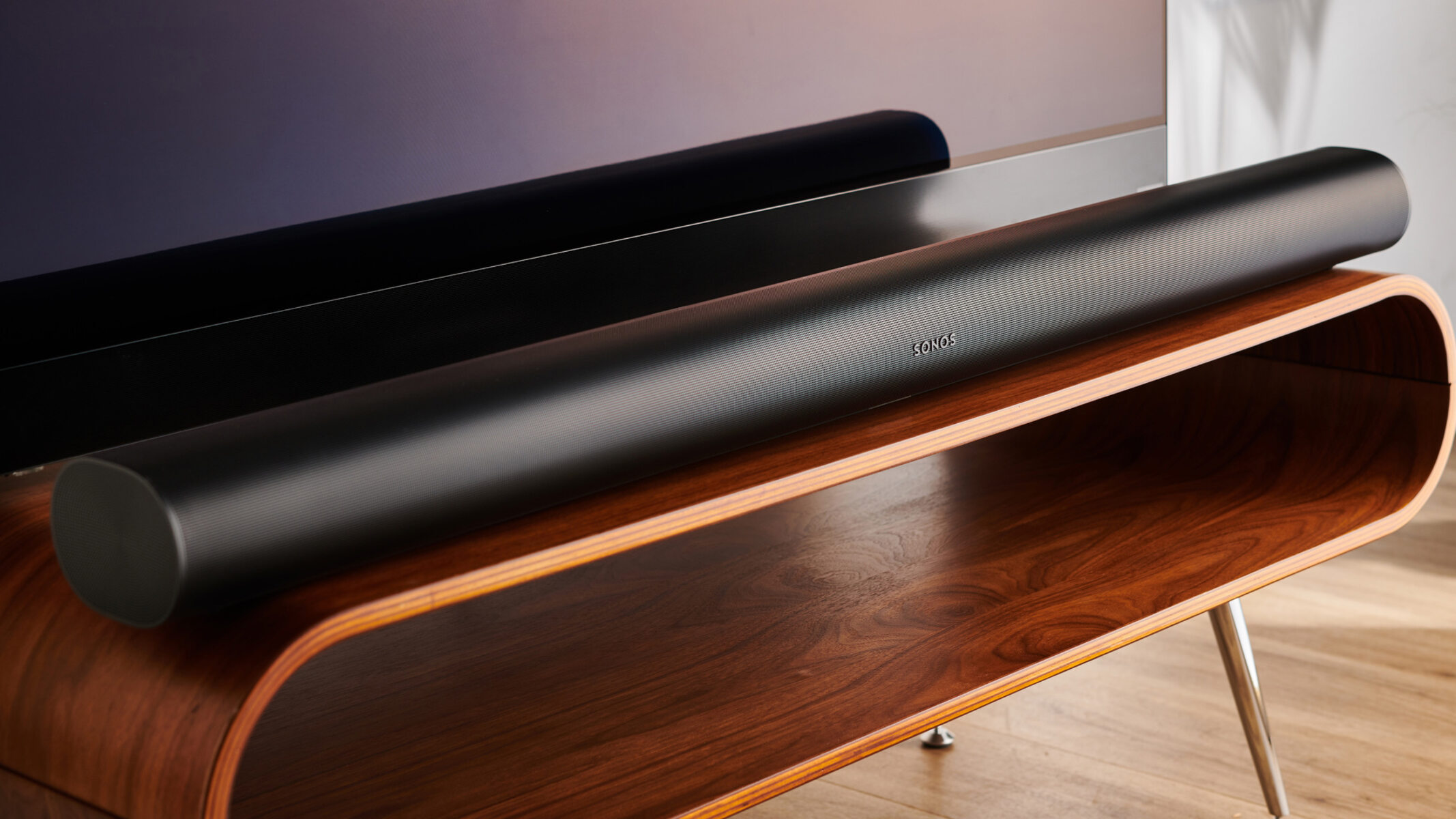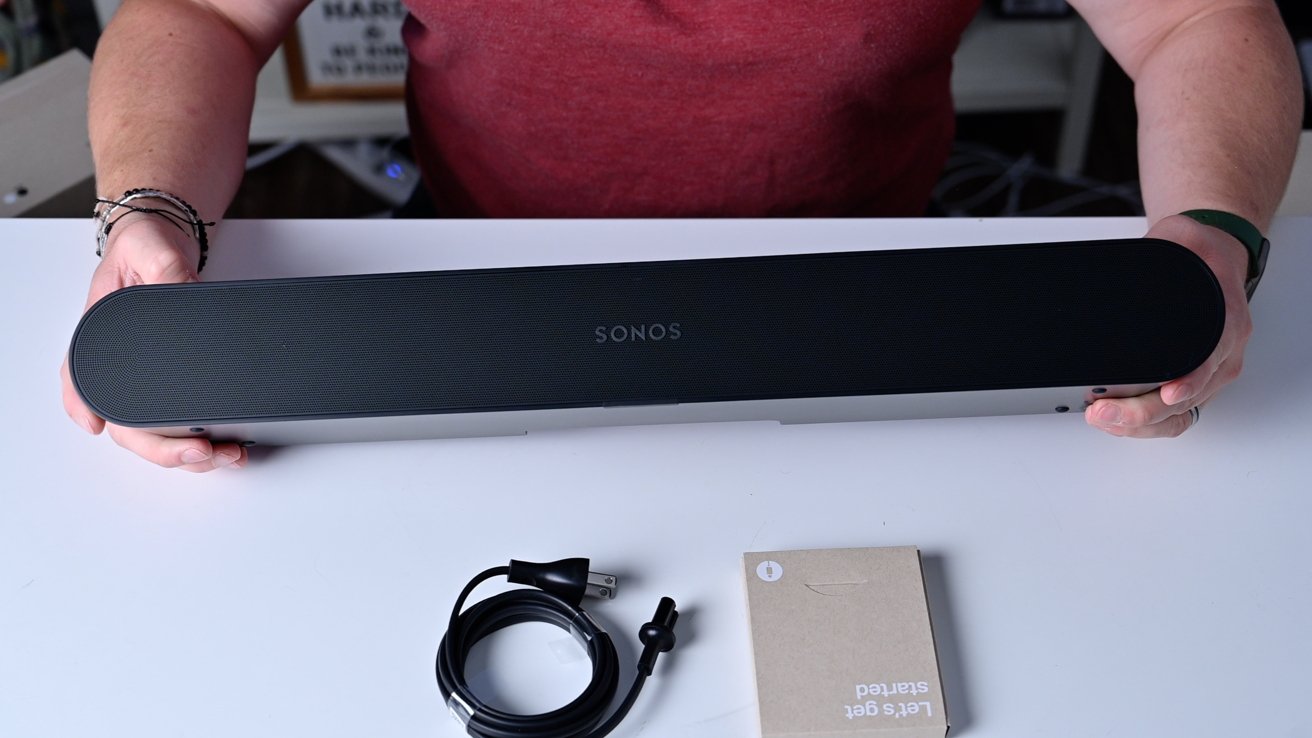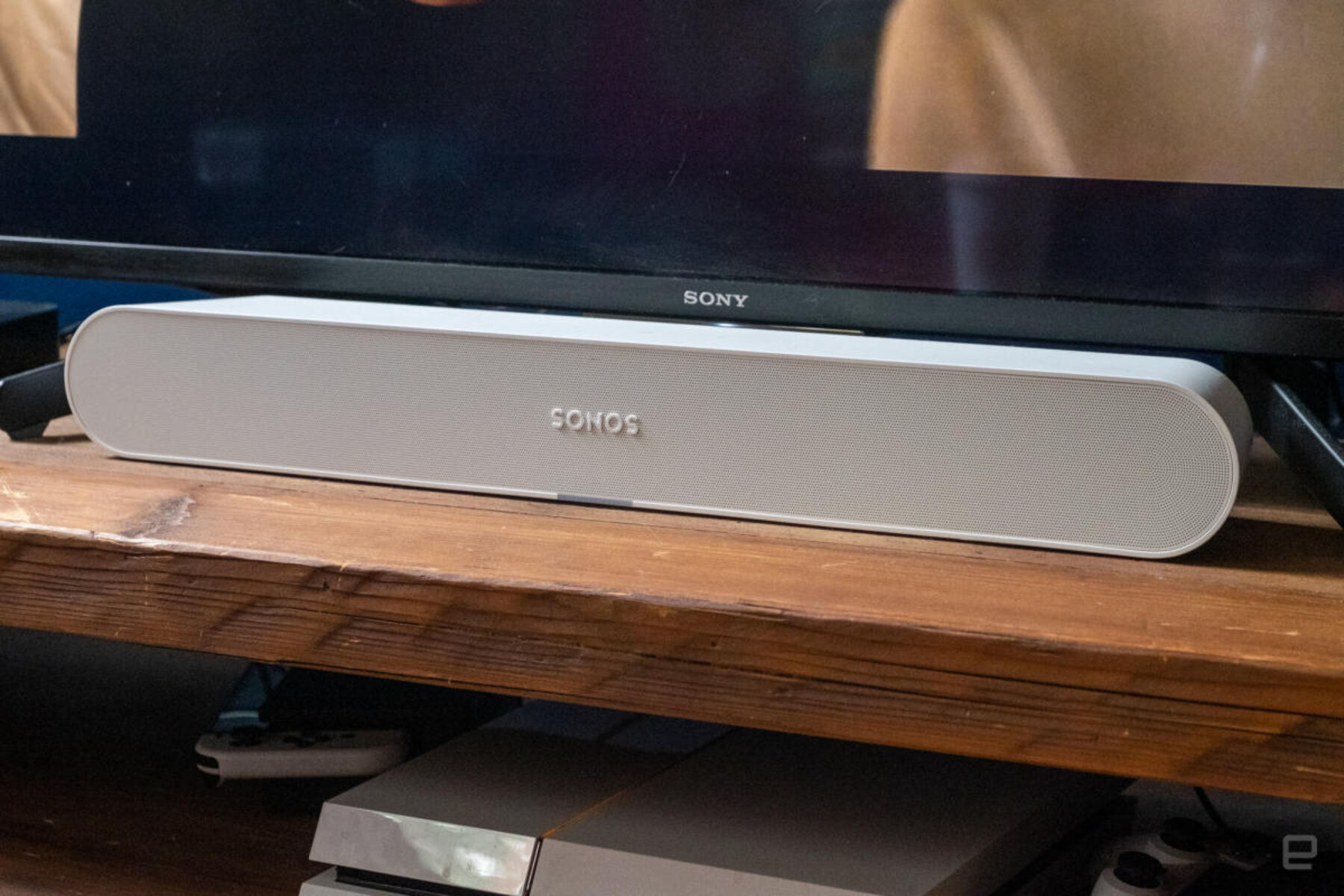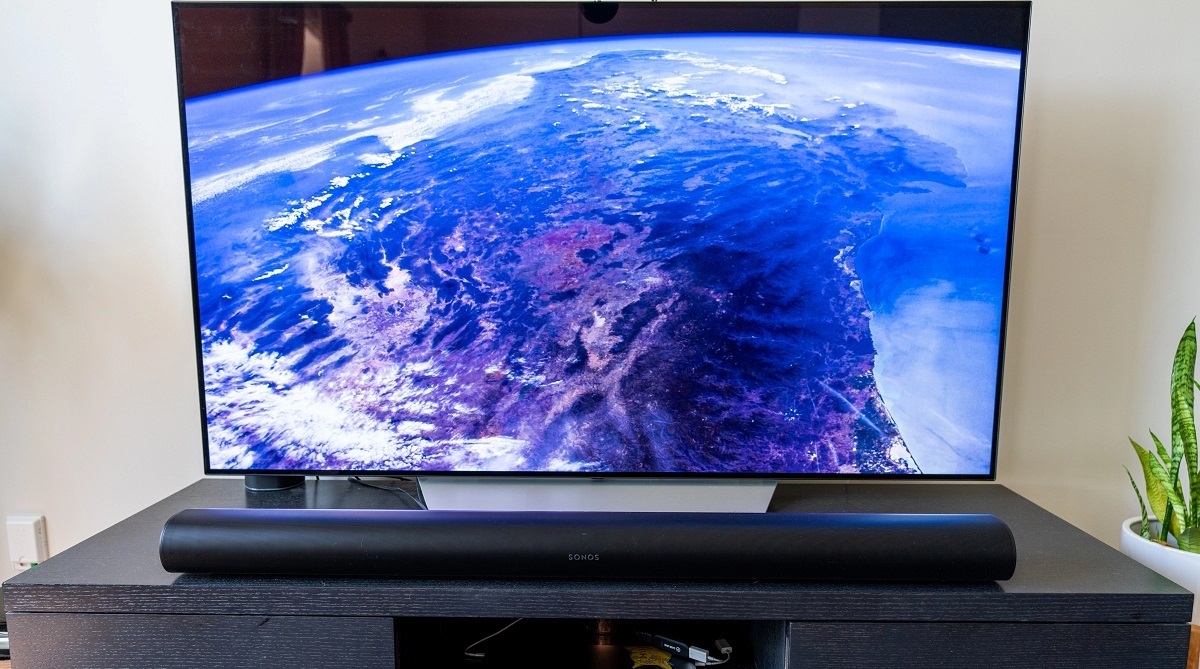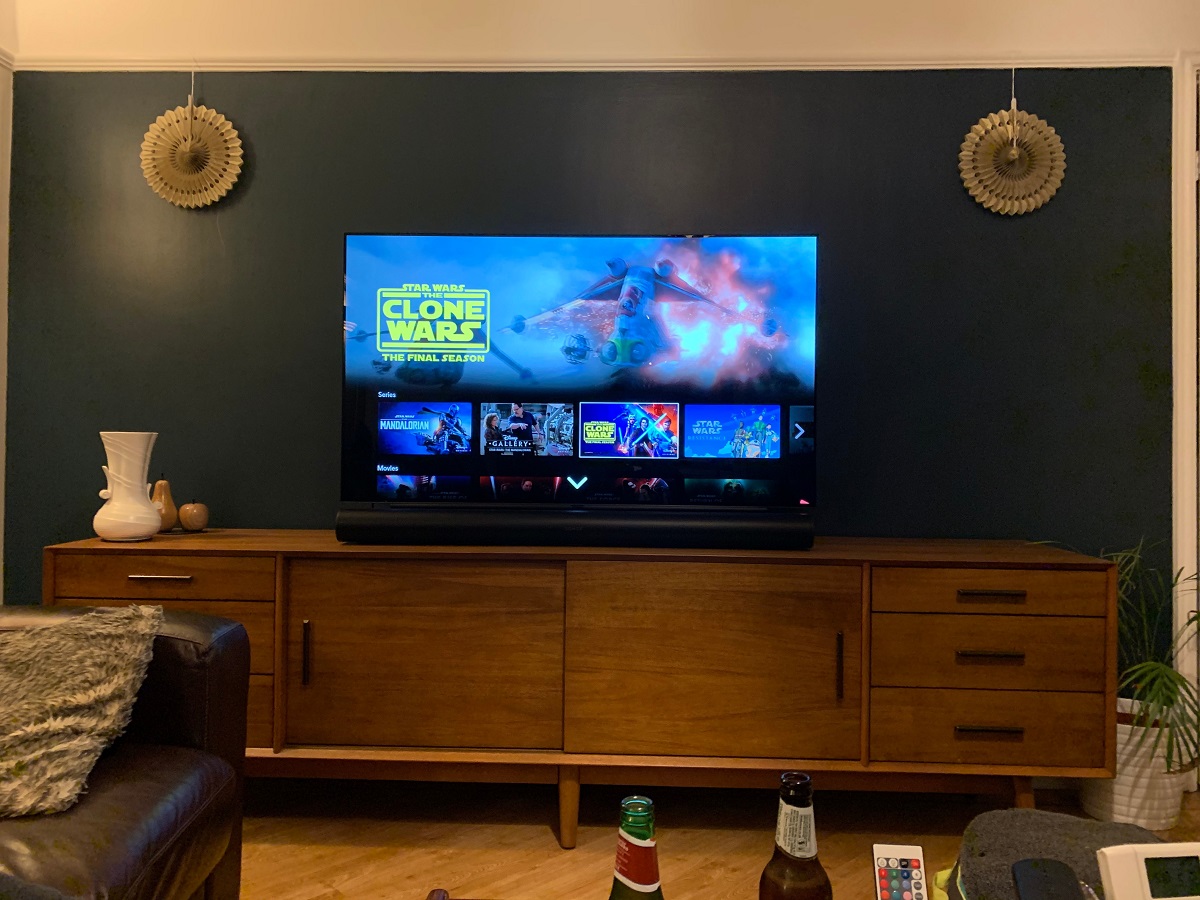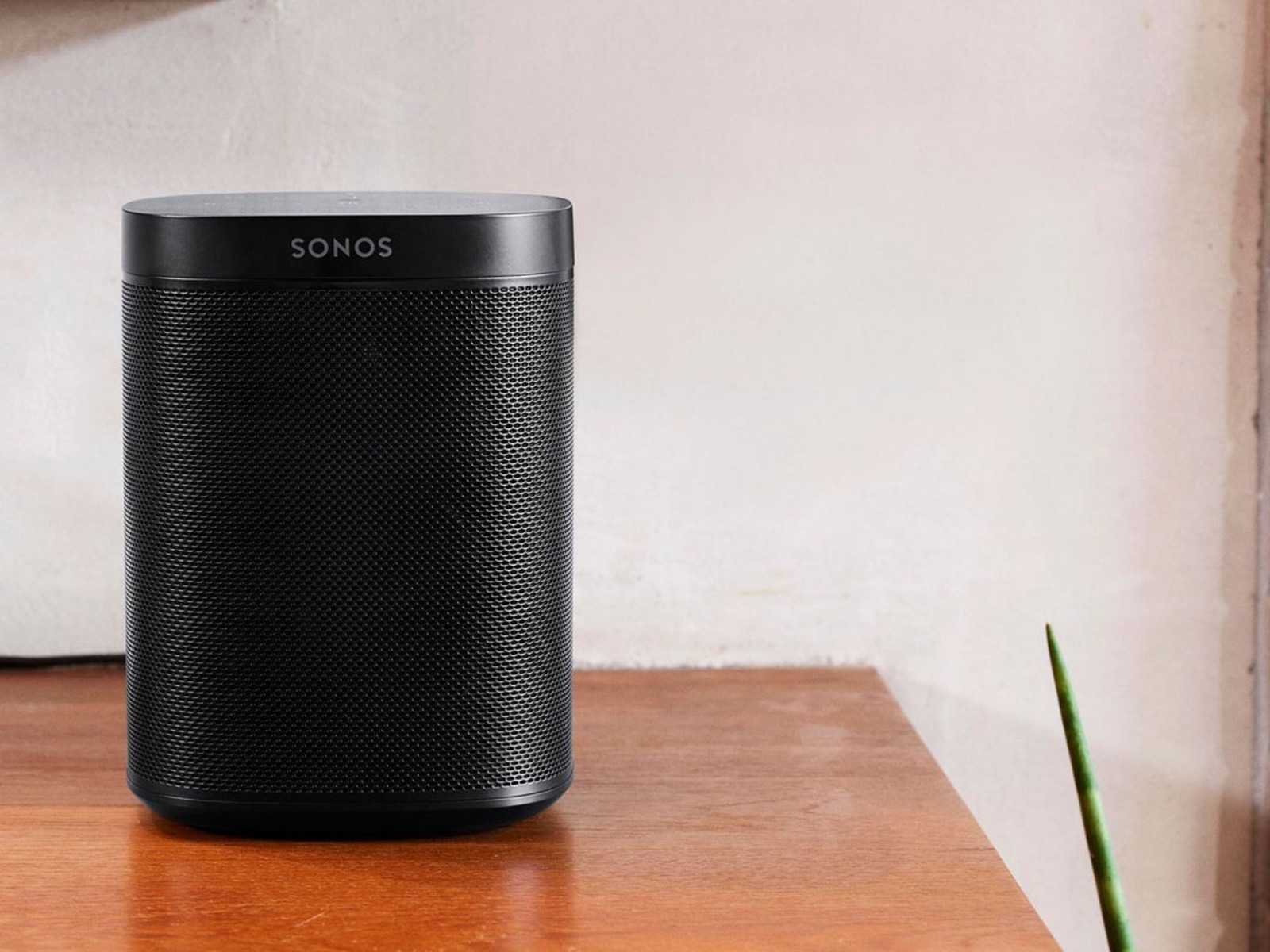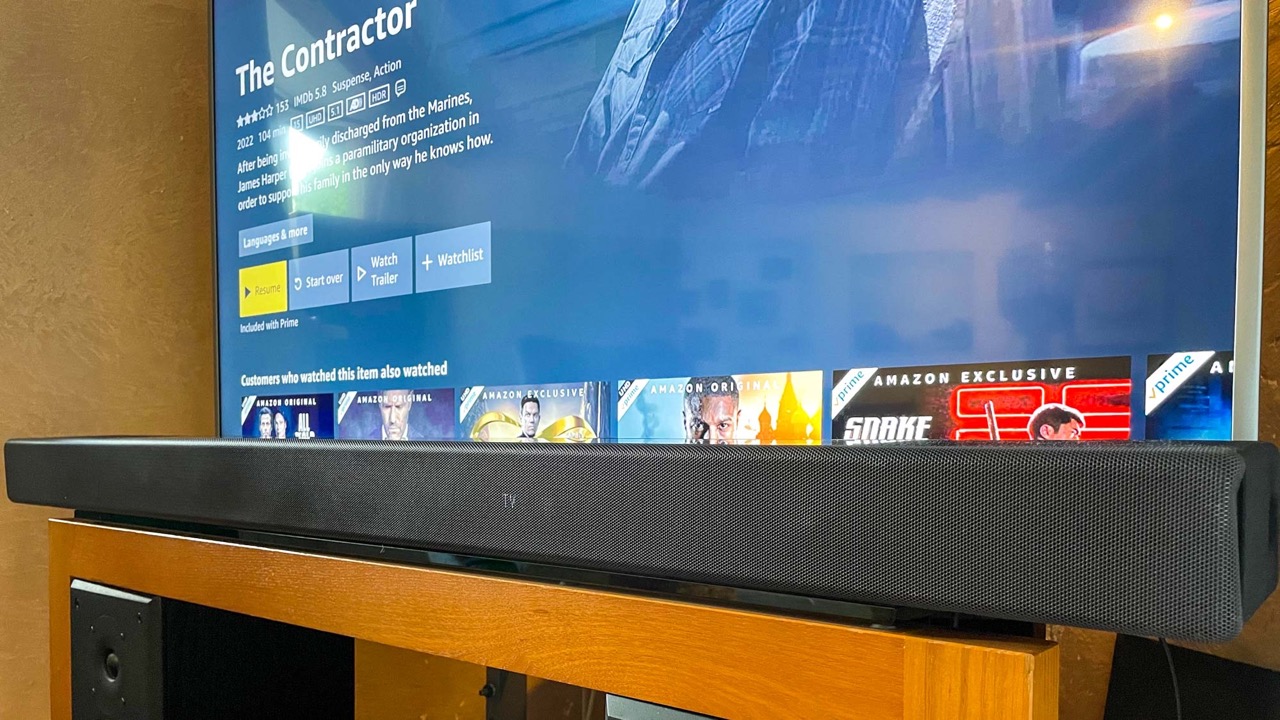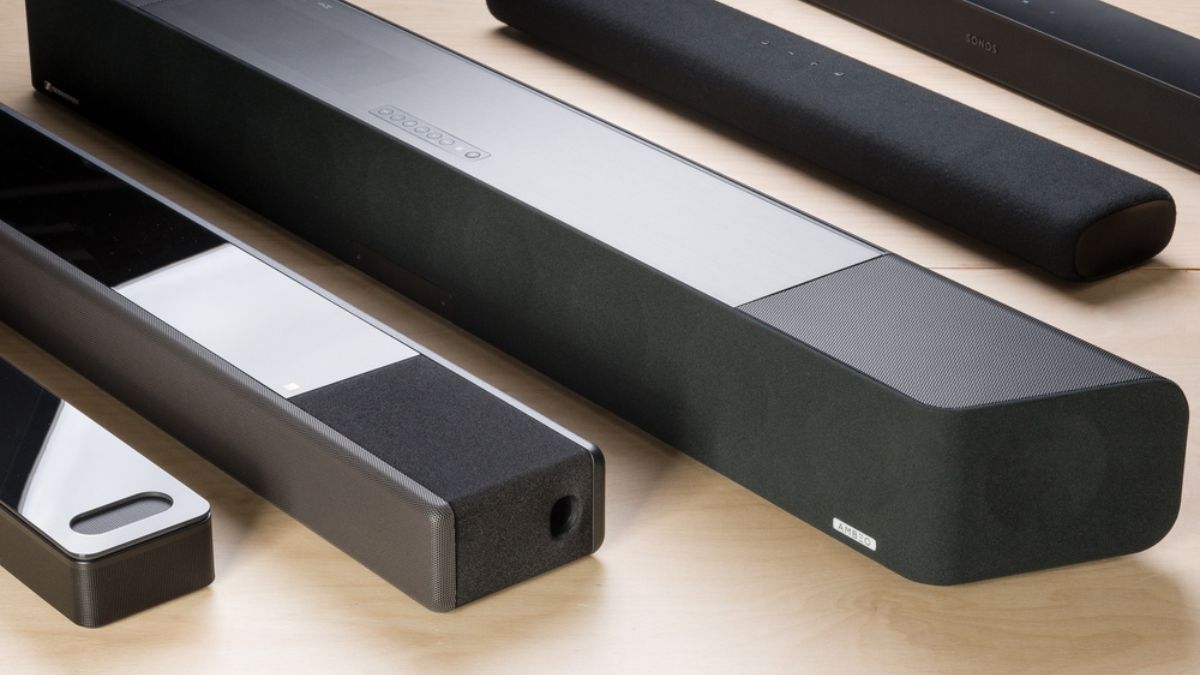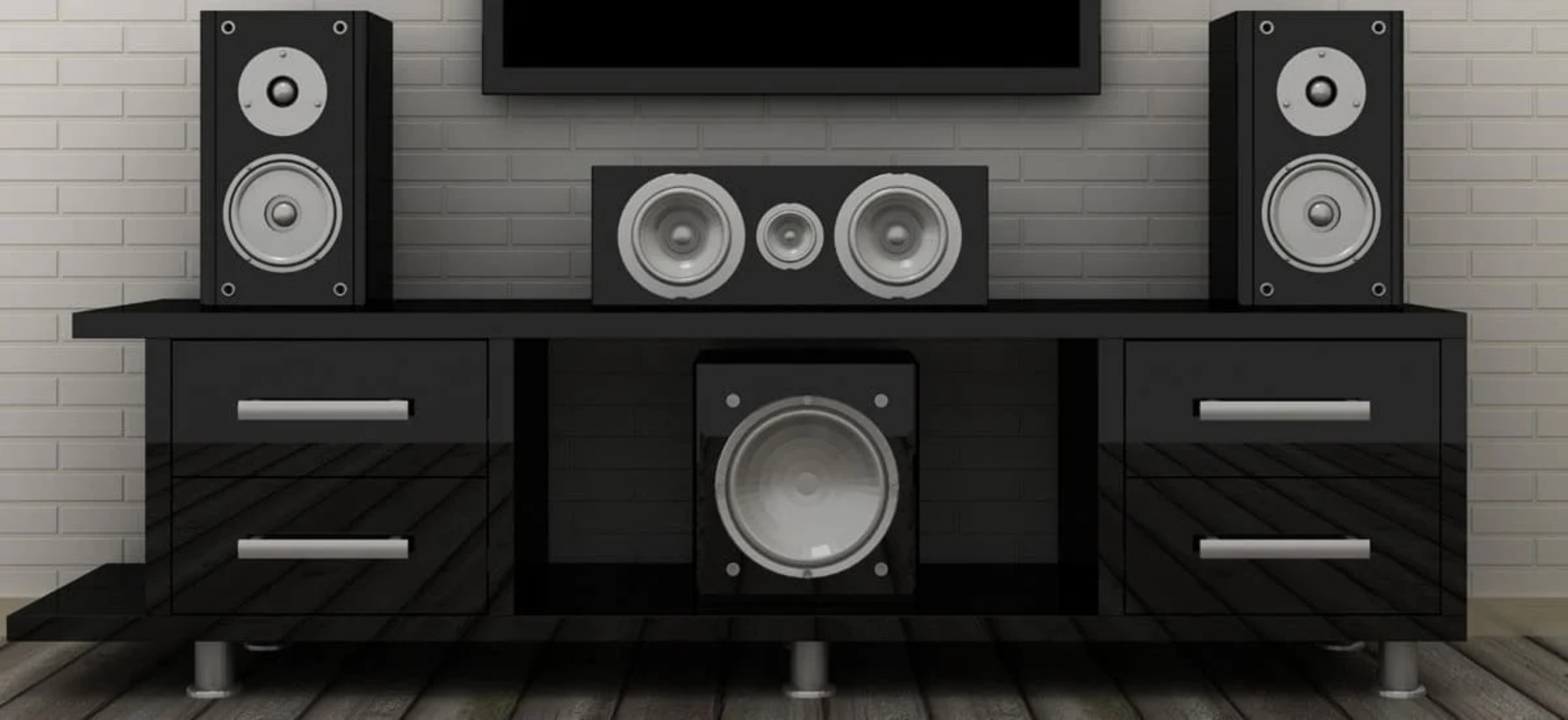Introduction
Welcome to the world of immersive audio experiences with the Sonos Soundbar. Whether you're a cinephile, a music enthusiast, or someone who simply appreciates high-quality sound, the Sonos Soundbar is designed to elevate your home entertainment to new heights. In this guide, we will walk you through the process of unboxing, setting up, and optimizing your Sonos Soundbar, ensuring that you get the most out of this cutting-edge audio technology.
The Sonos Soundbar represents a seamless fusion of sleek design and powerful audio engineering. Its elegant form factor conceals a wealth of advanced features, delivering crystal-clear sound and deep, rich bass that will transform your living room into a cinematic sanctuary. As we delve into the setup process, you'll discover just how effortless it is to bring this state-of-the-art sound system into your home.
Whether you're a tech-savvy individual or someone who is new to the world of audio equipment, fear not – this guide is designed to be accessible and easy to follow. We'll provide step-by-step instructions, accompanied by helpful tips and troubleshooting advice, to ensure that your Sonos Soundbar setup is smooth and hassle-free.
So, without further ado, let's embark on this audio journey and unlock the full potential of your Sonos Soundbar. Get ready to immerse yourself in a world of unparalleled sound quality and convenience as we explore the unboxing, setup, and optimization of this remarkable audio device.
Unboxing and Setting Up the Sonos Soundbar
Upon receiving your Sonos Soundbar, the excitement of unboxing a premium audio device is an experience in itself. The packaging is thoughtfully designed, exuding a sense of anticipation for the audio journey that lies ahead. As you carefully unbox the Sonos Soundbar, you'll be greeted by its sleek, minimalist design, hinting at the powerful technology concealed within its elegant frame.
Begin by finding the ideal location for your Sonos Soundbar. Whether it's positioned directly in front of your TV or mounted on the wall, ensuring that it has ample space to deliver its full audio prowess is essential. The next step involves connecting the power cord to the Soundbar and plugging it into a power outlet. Once powered on, the Sonos Soundbar emits a subtle, reassuring glow, indicating that it's ready to be paired with your TV and other devices.
Now, it's time to integrate the Sonos Soundbar into your existing home entertainment setup. Using the provided HDMI or optical cable, connect the Soundbar to your TV. The simplicity of this process is a testament to Sonos' commitment to user-friendly design. Once the physical connections are established, power on your TV and select the input that corresponds to the Sonos Soundbar. Within moments, you'll be immersed in the captivating audio output of the Sonos Soundbar, instantly elevating your viewing experience.
As you revel in the impressive sound quality, take a moment to explore the intuitive control options of the Sonos Soundbar. Whether it's adjusting the volume, fine-tuning the bass and treble, or accessing the various audio modes, the interface is designed to be effortlessly accessible, allowing you to tailor the audio output to your preferences with ease.
With the Sonos Soundbar now seamlessly integrated into your home entertainment setup, you're ready to embark on a sonic adventure that will redefine your audio experience. The next steps involve optimizing the Sonos Soundbar's settings and exploring its compatibility with the Sonos app, which we will delve into in the subsequent sections.
Connecting the Sonos Soundbar to Your TV
Connecting your Sonos Soundbar to your TV is a pivotal step in unleashing its full audio potential. The seamless integration of these two devices will transform your regular TV viewing into a captivating audio-visual experience. Whether you have a Smart TV, an LED TV, or a high-definition television, the Sonos Soundbar is designed to complement and enhance your viewing pleasure.
The primary method of connecting the Sonos Soundbar to your TV is through the use of an HDMI cable. Begin by identifying the HDMI ARC (Audio Return Channel) port on your TV. This designated port facilitates a two-way flow of audio, allowing the Sonos Soundbar to receive audio signals from the TV and, in some cases, enabling the TV to be controlled by the Soundbar’s remote. Once you’ve located the HDMI ARC port, simply connect one end of the HDMI cable to the Soundbar’s HDMI ARC port and the other end to the corresponding port on your TV.
If your TV does not have an HDMI ARC port, fear not – the Sonos Soundbar offers flexibility through its optical audio input. Utilizing the optical cable provided with the Soundbar, connect one end to the optical audio output on your TV and the other end to the Soundbar’s optical input. This straightforward process ensures that you can enjoy the Sonos Soundbar’s exceptional audio quality regardless of your TV’s connectivity options.
Once the physical connection is established, power on your TV and select the input that corresponds to the Sonos Soundbar. Your TV will now recognize the Sonos Soundbar as the primary audio output device, seamlessly channeling the audio from your favorite shows, movies, and music through the Sonos Soundbar’s powerful speakers. This integration not only enhances the audio quality but also eliminates the clutter of additional external speakers, providing a clean and minimalist setup.
With the Sonos Soundbar now harmoniously linked to your TV, you’re poised to immerse yourself in a world of captivating soundscapes. The next steps involve fine-tuning the audio settings and exploring the diverse functionalities offered by the Sonos app, which we will delve into in the subsequent sections.
Setting Up the Sonos App
One of the key components that elevates the Sonos Soundbar from a conventional audio device to a versatile, interconnected sound system is the Sonos app. This intuitive and feature-rich application serves as the central hub for controlling and optimizing your Sonos Soundbar, offering a seamless and immersive user experience.
The first step in harnessing the full potential of the Sonos app is to download and install it on your smartphone or tablet. Available for both iOS and Android devices, the Sonos app can be easily located in the respective app stores. Once installed, launch the app and follow the straightforward setup process, which involves creating a Sonos account and connecting your Sonos Soundbar to your home Wi-Fi network. This seamless integration ensures that you can effortlessly access and control your Sonos Soundbar from the palm of your hand.
Upon successfully linking your Sonos Soundbar to the app, you’ll be greeted by a user-friendly interface that grants you access to a myriad of audio customization options. From adjusting the sound settings to creating personalized playlists and accessing streaming services, the Sonos app empowers you to tailor your audio experience to suit your preferences with unparalleled convenience.
One of the standout features of the Sonos app is its ability to seamlessly integrate with various music streaming services, including Spotify, Apple Music, Amazon Music, and more. This integration allows you to effortlessly stream your favorite tracks directly to the Sonos Soundbar, immersing yourself in a world of limitless musical possibilities.
Furthermore, the Sonos app facilitates the creation of a multi-room audio setup, enabling you to synchronize your Sonos Soundbar with other Sonos speakers throughout your home. This interconnected audio network fosters a cohesive and immersive listening experience, whether you’re hosting a gathering or simply enjoying music in different areas of your living space.
As you navigate through the Sonos app’s intuitive interface and explore its diverse functionalities, you’ll discover a wealth of possibilities for customizing and optimizing your audio experience. The next steps involve fine-tuning the audio settings and exploring the seamless integration of the Sonos Soundbar with other Sonos speakers, which we will delve into in the subsequent sections.
Adjusting Audio Settings and Preferences
Customizing the audio settings and preferences of your Sonos Soundbar is a pivotal step in tailoring the sound output to your unique preferences and the characteristics of your living space. The Sonos Soundbar offers a range of adjustable parameters that allow you to fine-tune the audio to perfection, ensuring an immersive and personalized listening experience.
One of the primary audio settings that you can adjust is the equalizer, which enables you to modify the balance of bass, treble, and mid-range frequencies to suit your sonic preferences. Whether you prefer a bass-heavy output for cinematic impact or a more balanced, neutral sound for music playback, the Sonos app provides intuitive controls for refining the audio profile of the Soundbar.
Furthermore, the Sonos app offers various audio modes that cater to different content types and listening scenarios. For instance, the “Night Sound” mode reduces the intensity of loud sounds, allowing for a more subdued audio output during late-night viewing without compromising on clarity. On the other hand, the “Speech Enhancement” mode accentuates dialogue, ensuring that every word is crisp and intelligible, enhancing the overall viewing experience.
Another noteworthy feature is the Trueplay tuning functionality, which harnesses the power of your smartphone or tablet to optimize the Sonos Soundbar’s audio output based on the acoustics of your room. By utilizing the built-in microphone of your device, Trueplay analyzes the sound reflections and characteristics of your living space, automatically calibrating the Sonos Soundbar to deliver the best possible audio performance.
Additionally, the Sonos app provides the flexibility to create and manage custom speaker groups, allowing you to synchronize the Sonos Soundbar with other Sonos speakers in your home. This seamless integration fosters a cohesive multi-room audio setup, enabling you to enjoy synchronized music playback throughout different areas of your living space.
As you delve into the audio settings and preferences offered by the Sonos Soundbar and the accompanying app, you’ll discover a wealth of options for personalizing and optimizing your audio experience. The next steps involve exploring the seamless integration of the Sonos Soundbar with other Sonos speakers and addressing common troubleshooting issues, which we will delve into in the subsequent sections.
Using the Sonos Soundbar with Other Sonos Speakers
One of the most compelling aspects of the Sonos ecosystem is the seamless integration and synchronization of multiple Sonos speakers, creating a cohesive multi-room audio setup. The Sonos Soundbar can be effortlessly paired with other Sonos speakers, allowing you to extend the audio experience beyond your living room and immerse yourself in a network of interconnected sound.
Through the intuitive interface of the Sonos app, you can create custom speaker groups, enabling you to synchronize the Sonos Soundbar with other Sonos speakers positioned in different areas of your home. This interconnected setup fosters a harmonious audio network, allowing you to enjoy synchronized music playback and immersive soundscapes throughout your living space.
Whether you have Sonos One, Sonos Five, or any other compatible Sonos speakers, the process of integrating them with the Sonos Soundbar is straightforward and user-friendly. Once the speakers are added to your Sonos system through the app, you can effortlessly group them with the Sonos Soundbar, creating a unified audio environment that transcends the confines of individual rooms.
With the Sonos Soundbar serving as the cornerstone of your home entertainment setup, the addition of other Sonos speakers amplifies the audio experience, allowing you to enjoy rich, room-filling sound in every corner of your home. Whether you’re hosting a social gathering, relaxing in your bedroom, or unwinding in your study, the interconnected Sonos ecosystem ensures that the music follows you wherever you go.
Furthermore, the Sonos app provides intuitive controls for managing and customizing the playback of your Sonos speakers, allowing you to adjust volume levels, create synchronized playlists, and seamlessly transition between different audio sources. This level of flexibility and control empowers you to curate a personalized audio environment that adapts to your lifestyle and preferences.
As you explore the seamless integration of the Sonos Soundbar with other Sonos speakers, you’ll discover the boundless potential for creating a multi-dimensional audio landscape that enriches your daily experiences. The next steps involve troubleshooting common issues that may arise during the setup and usage of the Sonos Soundbar, which we will address in the subsequent section.
Troubleshooting Common Issues
While the setup and usage of the Sonos Soundbar are designed to be seamless, encountering occasional issues is not uncommon. Fortunately, troubleshooting common issues with the Sonos Soundbar is a straightforward process that can be resolved with a few simple steps, ensuring that you can continue to enjoy an uninterrupted audio experience.
If you encounter connectivity issues between the Sonos Soundbar and your TV, the first step is to verify that the physical connections, such as the HDMI or optical cable, are secure and properly seated. Additionally, ensuring that the TV’s audio output settings are configured to recognize the Sonos Soundbar as the primary audio device can resolve many connectivity-related issues.
In the event of audio playback issues, such as distorted sound or intermittent audio dropouts, checking for potential wireless interference and optimizing the placement of the Sonos Soundbar within your living space can significantly improve the audio performance. Additionally, ensuring that the Sonos Soundbar and other Sonos speakers are running the latest firmware can address compatibility and performance-related issues.
If you encounter challenges with the Sonos app, such as difficulty in connecting to the Sonos Soundbar or managing speaker groups, ensuring that your mobile device is connected to the same Wi-Fi network as the Sonos system and restarting the Sonos app can often resolve connectivity issues.
Furthermore, if you experience issues with Trueplay tuning or audio calibration, ensuring that the microphone of your mobile device is unobstructed and free from interference can enhance the accuracy of the tuning process, resulting in optimized audio performance.
In the rare event that you encounter persistent issues that cannot be resolved through basic troubleshooting, reaching out to Sonos customer support or consulting the comprehensive support resources available on the Sonos website can provide tailored assistance and guidance for resolving more complex issues.
By familiarizing yourself with these common troubleshooting steps, you can ensure that any minor issues that may arise during the setup and usage of the Sonos Soundbar are swiftly addressed, allowing you to continue enjoying the exceptional audio quality and immersive experiences that the Sonos ecosystem offers.
Conclusion
Congratulations on successfully setting up and optimizing your Sonos Soundbar, embarking on a journey that promises to redefine your home entertainment experience. The process of unboxing, connecting, and fine-tuning the Sonos Soundbar has equipped you with the tools to immerse yourself in a world of captivating soundscapes, tailored to your unique preferences and lifestyle.
As you’ve discovered, the Sonos Soundbar represents a harmonious blend of cutting-edge audio technology and user-friendly design, seamlessly integrating into your living space to deliver immersive sound that elevates your everyday experiences. Whether you’re indulging in a cinematic movie night, hosting a social gathering, or simply unwinding with your favorite music, the Sonos Soundbar enriches every moment with its rich, room-filling sound.
The versatility of the Sonos app, coupled with the seamless integration of the Sonos Soundbar with other Sonos speakers, empowers you to create a multi-dimensional audio environment that adapts to your lifestyle, preferences, and the unique characteristics of your home. The interconnected Sonos ecosystem ensures that the music follows you from room to room, creating a cohesive and immersive audio network that transcends conventional boundaries.
As you continue to explore the diverse functionalities and customization options offered by the Sonos app, you’ll uncover new ways to curate personalized playlists, synchronize speaker groups, and seamlessly transition between different audio sources, further enriching your audio experiences.
Should you encounter any minor issues along the way, the troubleshooting steps provided will guide you in swiftly addressing common challenges, ensuring that your Sonos Soundbar continues to deliver uninterrupted audio performance.
With the Sonos Soundbar at the heart of your home entertainment setup, you’re poised to embark on a sonic journey that promises to captivate your senses and transform the way you engage with audio content. Whether it’s the thunderous impact of a movie soundtrack, the subtle nuances of a classical symphony, or the infectious rhythms of your favorite tunes, the Sonos Soundbar is your gateway to a world of unparalleled sound quality and immersive experiences.
Thank you for joining us on this audio adventure, and may your Sonos Soundbar continue to enrich your life with its exceptional audio performance and seamless integration into your home environment.







